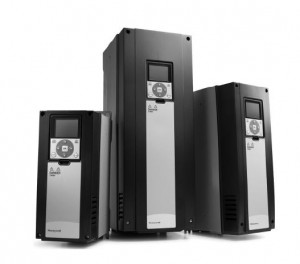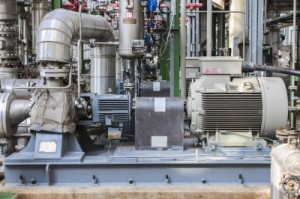A variable frequency drive (also known as a variable speed drive/VSD or VFD) is a type of electronic controller that adjusts the speed of an electric motor. The variable frequency drive works by varying the motor input frequency and voltage. The device is used in a system that is made up of an AC motor, main drive controller assembly, and drive operator interface. Variable frequency drives are used in a variety of applications in large commercial buildings, plants, warehouses or manufacturing operations, from small motors to large mine mill drives and compressors. Variable frequency drives have become a popular alternative to fixed speed controllers and throttling devices like dampers and valves, because they help save energy, as well as extend the life of motors and their associated equipment which can contribute to large operational savings over their lifetime.
Energy Savings
According to VFDs.com, electric motor systems account for more than 65 percent of power consumption in industries. One way to use less power and save money is by switching to variable frequency drives. Variable frequency drives are able to match the device’s motor speed to the demands of the work being performed. Because of that, only the amount of energy that is needed to perform the work is used — no excess energy is wasted. This can lead to significant financial savings, you’re not wasting unnecessary energy. According to Yaskawa, the world’s largest manufacture of AC drives and motion control products, you will be able to see savings in less than three years after installing a variable frequency drive — and sometimes, savings can be seen, in less than a year after installation.
Give more life to your equipment
Variable frequency drives can also reduce the need for maintenance and repair because they’re able to gradually ramp up a motor to operating speed, as opposed to single-speed drives that start motors more abruptly, which can subject the motor to high torque and current surges. In addition, because of the abrupt starts, single-speed drives do not survive as long as variable frequency drives. Extending the life of a motor and the associated equipment could contribute to savings in thousands to millions of dollars, depending on the size of your operation. Overall, variable frequency drives will lead you to save money in many ways.
Common Applications for Variable Frequency Drives:
Variable-frequency drives can be used in a variety of fields and applications…
HVAC – air conditioning compressors
Oil and Gas – oil transfer pumps, compressors, pumps
Water supply pumps for water and waste water
Power generation – forced draft fans, condensate pumps, induced draft fans
Mining – mortar pumps and fans
Dusting fans, furnace fans, and oxygen-generators for steel production
Central Vacuum Systems
Any Multi-User application that runs at partial capacity
Companies that sell and install Variable Frequency Drives include:
Grainger – grainger.com
Mitsubishi Electric Automation – mitsubishielectric-usa.com
Honeywell – honeywell.com
Eaton Corporations – eaton.com
Dealers Industrial Equipment – dealerselectric.com
VFDS.com
Some electric and utility companies may offer a rebate for customers who install a variable frequency drive. Check with your electric company for more information. Besides energy and cost savings, the benefits of having a variable frequency drive include reduced fan noise and duct rumble, and more accurate control of HVAC settings, which eliminate the need for frequent readjustments. If you run a large building, plant, warehouse or manufacturing operation, using variable frequency drives is an opportunity for substantial energy and cost savings, that deserves some serious investigation.



Leave a Reply